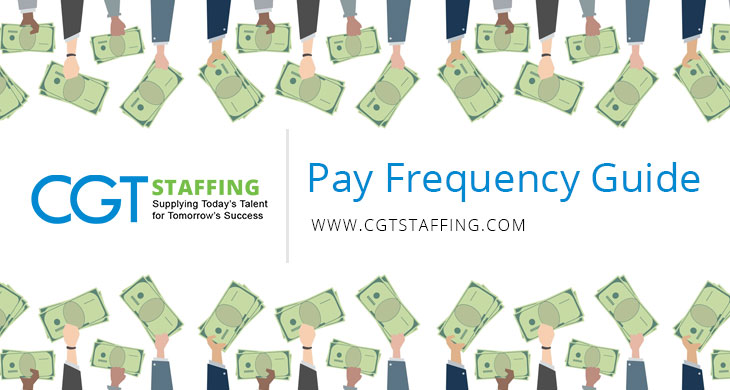Paying workforces is always a significant business obligation. That’s in addition to managing business expenses, abnormal costs, wastages, overheads, and business risks. Moreover, businesses have to manage all of the above while keeping their cashflows sufficient. Pay frequency can often be a huge factor in determining how you manage your payroll expenses. Learn more about this frequency, how to determine it, and how businesses can leverage different types of payroll strategies.
Table of Contents
Always Comply with Pay Frequency Requirements by State
In almost every country in the world, labor and compensation laws ensure employers pay their workers a fair living wage. The same is true of the United States. Federal laws protect worker rights, including minimum wage, healthcare, FMLA, and even pay frequency in some cases. In addition, every state has the freedom to determine its own protective statutes relative to workers’ rights.
Every business in the United States must comply with state and federal law. Noncompliance or violation of these requirements can and does lead to serious legal consequences.
Determining Pay Frequency and Balancing Perspectives
In most cases, employers determine how often they pay their workers. Of course, there are be exceptions. In fact, there can be several factors in play here perspectives to consider here in terms of payroll frequency.
The Employer Perspective
Payroll expenses are always significant to employers. That’s why payroll frequency matters. The more frequently an employer pays workers, the more money (and time) it costs. On the other hand, paying less frequently means less time and effort involved. Both may still be the same overall compensation, but a bi-weekly or a monthly payment system will obviously be far less troublesome than a weekly payout.
The Employee Perspective
Employees, of course, have their own view on how frequently they should be paid. Not surprisingly, pay expectations can vary based on experience. A recent veteran, for example, may still be used to military pay frequency. In most cases, workers would want to be paid as frequently as possible.
The Challenge
Choosing the right pay frequency model is extremely important. The challenge is in maintaining a balance between employee expectations about frequency and business sustainability. If payouts are too frequent, you could easily land in a tough cash flow problem. On the other hand, if they are too infrequent, you may see a rise in employee turnover.
Types of Pay Frequency
Employers typically have the option to choose how frequently they pay workers during a year. That said, laws concerning pay frequency by state can always impact the ultimate decision. In most cases, there are four primary frequency types when it comes to payroll:
Weekly Payments (52 Per Year)
Some types of roles, including those involving piecemeal work, come with weekly payments. The frequency of weekly payments makes it easier for recruiters like a manufacturing staffing agency to source workers like factory workers, supervisors, and even contract-to-hire workers.
In most cases, employees prefer a weekly frequency for several reasons. It makes it easier for them to budget for a week as compared to a longer cycle. This also means they have less trouble meeting obligations like credit card payments or automated billing. Moreover, overtime can be calculated more easily over a week than a month. However, employers should consider the high cost and time consumption in payroll payments due to the increased frequency.
Bi-Weekly Payments (26 Per Year)
Bi-weekly payments usually involve paying employees every other week. This usually amounts to 26 payment cycles, with two or sometimes three each month. However, while this makes it easier for employers to pay as compared to weekly payrolls, it also means inconsistency in dates. Every month’s bi-weekly payouts will fall on a different day, making it harder for employers to create cash budgets and maintain cashflows at all times. However, two payouts still help save time and money compared to four payouts every month.
Semi-Monthly Payments (24 Per Year)
A semi-monthly frequency will typically involve two payments every month. These are usually on the first day of the month and on the 15th of each month. Or employers can make the first payment on the 15th of each month and the second one on the last day of the month. This limits the frequency to 24 payouts every year.
It also makes life easier for employees when it comes to knowing when they’ll have more money coming in to meet bills or payments. Accounting and reporting for payroll expenses are also far simpler, including for workers on a staffing agency’s payroll.
Monthly Payments (12 Per Year)
Monthly pay frequencies involve a single pay date every month. This keeps payroll expenses down to 12 times a month. However, it can pose problems for employees in terms of budgeting and savings. It can cause employee motivation to go down as workers struggle to manage their finances. Employers will undoubtedly save on payroll management expenses. But they may encounter other complications, such as calculating overtime payments over a 170+ hour period.
How to Determine the Best Frequency for Your Business
There is no “one size fits all” solution when it comes to determining pay frequency. A number of factors can come into play. A business with a decentralized recruitment system may allow its various branches more flexibility in determining individual frequency. On the other hand, workforce composition matters as well. A business with most of its workforce consisting of temps may pay them differently compared to workers sourced through direct hire recruiting.
Ultimately, choosing the frequency remains the prerogative of the employer. However, when doing so, certain considerations need careful thought. These can be narrowed down to evaluating:
- How much money a business can easily spend on payroll every month.
- What frequency would be most appropriate for the workforce?
- How overtime calculations factor into the chosen pay cycle.
- What state requirements apply to the business.
